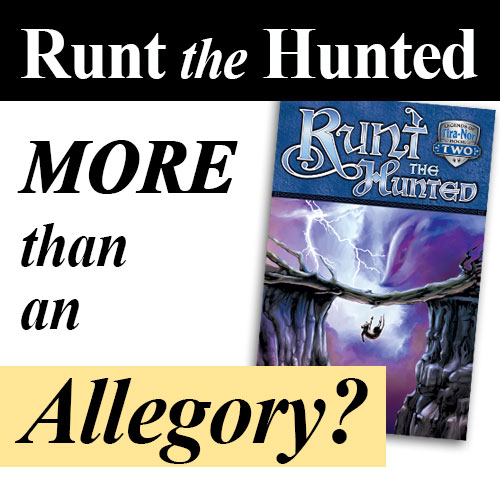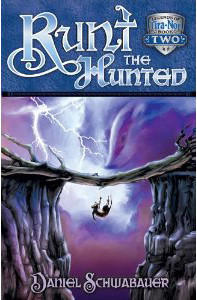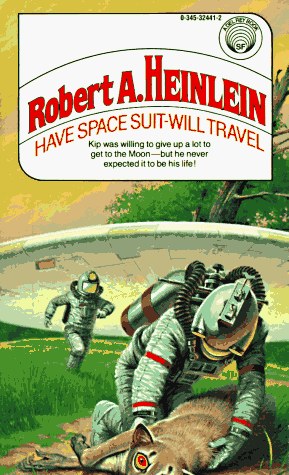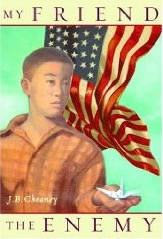Is RUNT THE HUNTED An Allegory?
Today, in a fun turn of the tables, Miguel Flores, winner of the 2014 Novel Contest, for The Witch’s Cat, offers his thoughts on Daniel’s novel Runt the Hunted. Please note this post includes some spoilers.
At face value, Runt the Hunted is an anthropomorphic retelling of David’s life in a world full of mice. It’s also called a children’s book, which, in my opinion, can be a bit misleading.
There have been many retellings of David’s life. He is about as famous as a Bible hero can get. There is David the boy shepherd, David the giant-slayer, David the man after God’s own heart, David the psalmist, David the warrior-poet. His life, however, is also full of pitfalls. His weakness can be seen especially when he commits adultery and orchestrates the death of Uriah.
Switching out David for the tiny mouse, JaRed, who is so small that he is literally nicknamed Runt, this book brings into perspective the story of a king before he was ever king. It follows the David-slaying-Goliath era of the first book, Runt the Brave, not by taking on another of David’s famous ventures, however, but by focusing on what happens in a rather obscure, overlooked part of his life.
Children’s literature is my favorite sort of literature. While these stories might not all have the prose prowess of classic adult fiction—books like Les Miserables or Pride and Prejudice—there’s a magical quality in them I have yet to find replicated in most adult books.
Some critics feel that stories directed to children are incapable of carrying thematic or emotional weight, but for some reason it’s the children’s stories that stick with us as we grow older. Some critics feel that stories revolving around animals are especially childish, but I think they’re the best sort. Sometimes we need animals to teach us about humanity, because it’s hard to see those truths when we simply look at ourselves.
In a recent post that I can’t recommend enough, Letting Your Novel Be Your Teacher, Daniel Schwabauer explains why he chose to write about David’s time on the run when he was hunted by the mad king Saul (found in 1 Samuel 22–23). “I never begin letting a story change me until it has already changed me,” Daniel writes. He explains why this biblical story impacted him:
David acted like a king before he had the king’s resources. He defended Israel before he had an army. He dispensed justice and mercy before he wore a crown. He found ways to expand the kingdom in his spare time, from a makeshift office in the cave of Adullam.
In short, David was a good king before he was a king at all.
Retelling this story through JaRed “forced me to ask myself the question I was trying to brush off onto my story hero,” Daniel writes. “Who do you think you are?”
Like David, we’ve already been told. The oil was poured out on our heads when we were ruddy and young, when our friends and family didn’t believe. But we knew. We were called to a royal priesthood. We have been given the privilege of adoption. We have been called to be kings and priests.
Now we must decide what we will do with this anointing.
Will we be good kings before we are crowned?
Wow. Talk about a life-changing experience and a riveting theme. So deep and complex, in fact, that I wondered how well it would actually be conveyed in the book. Especially in the paws of a tiny little mouse called “Runt.”
I’ll be honest.
Little annoys me more than allegories. Most allegorical stories are too direct, too obvious, too insistent on forcing a reader to accept the book’s truth to the point that a reader can no longer enjoy the story—or, in some cases, even the truth. In fact, one of the few things I find more frustrating than allegories are Christian authors who insist on giving a work of art validity based on the bluntness of its message.
Readers want to be transported. They want to have fun, to make friends, to discover a world where lessons are learned not through the obviousness of the symbolism, but through the doing—the acts of heroism.
We aren’t truly satisfied by puppet Jesus and cartoon disciples. So what is a mouse-David to us?
This story isn’t one of those, thankfully. What I found in Runt the Hunted was an anomaly. Here was a Christian story that I actually enjoyed, with a plot that wasn’t bogged down by preachy moments—a novel with characters who acted convincingly real in desperate times, with themes so engraved into the story that I don’t think I even noticed everything.
The theme of Daniel Schwabauer’s first book, Runt the Brave, is Right Makes Might. The second book both expounds upon and complicates this. There are many interesting issues that characters deal with. They have to figure out their identities, they question God, they learn how to redeem themselves, how to let go of preconceived notions, and more. Most importantly, this book makes you ask yourself, just as the author had to: “Who do you think you are?”
Characters in Runt the Hunted aren’t very typical for “Christian” literature. They are emotionally complex, they don’t always do the right thing, and they have lots of questions—some of which aren’t blatantly answered. This novel reminded me a little bit of the book of Job.
There is a beautiful scene where HaRed, JaRed’s older brother, encounters the Ghost-Badger and we see him at his most vulnerable. He feels useless and stupid. “I’ve wasted my whole life.” He begs the Ghost-Badger to give JaRed the message.
Instead, the Ghost-Badger tells HaRed that he was given a task to finish, and the Ghost-Badger stays with him so that he needn’t continue alone.
Interestingly, there are also scenes from the perspective of the villains. I found the dynamics between Shosheth, Kreeg, and JaRed interesting because they all dealt with similar issues, similar questions, and yet had radically different answers.
But crucially, even JaRed, the rat-slayer with incredible faith, suddenly questions everything he once believed. This rare feature (for Christian fiction) hit me harder than almost anything else: The main character questions God. He does it a lot.
Then the Badger spoke. Its voice came like ice breaking, a slow, creaking whisper that hushed all other sound and slowed the universe to a crawl. “Is this what you want?”
Shame flooded through him, followed by self-loathing. The Badger had seen through his outward shell and gazed into his true self.
Yes. This is what I want. I want those who hurt me to suffer. I want you to kill him. I want to wash myself in their misery. But please! I don’t want to want it!
“There are now two kingdoms,” Gibbs had said. “And all must choose one or the other.”
But what if I have both kingdoms inside me?
…
The Badger’s voice boomed like rolling thunder. Its body hovered in the air. “What is the worst thing that can happen to you, JaRed, son of ReDemec?”
JaRed watches as his whole life falls apart. It looks like ElShua isn’t keeping his promises. As things progress, more of the people he once knew are suffering. The rats essentially destroy most of the city and, by the end of the story, so many have died I started to wonder how JaRed could ever defeat the rats. If the beginning of this story was a slow climb up, the entirety of the book’s last few chapters were a never-ending coaster ride that only grew in intensity.
JaRed begins to see in himself some of the qualities of SoSheth, and that scares him. He sees the brutality and deadness of Kreeg, and that worries him. He sees ElShua withdraw from Tira-Nor, and that hardens him. He eventually meets the Ghost-Badger and finally, the question that has haunted him the entire story begins to catch up with him.
Who do you think you are?
Whatever he thought he was—Ratbane; anointed king; outcast, deserted by ElShua—JaRed realizes he was wrong. He doesn’t know who he is.
The worst thing? The very worst thing? Not death. Death wasn’t the worse thing that could happen.
I could become like him. That’s the worst thing that could happen to me.
I could become like SoSheth.
I said at the beginning of this post that calling this book a children’s book can be a little misleading. I also said that Runt the Hunted is an anomaly in Christian fiction. Personally, I found that Runt the Hunted is a book with very adult ideas that still maintains its childlike wonder. It’s a little paradoxical, but I’m glad it worked.
Beyond the scope of intricately crafted writing, stories reveal their true colors in meaning. Watch the One Year Adventure Novel promo video and you’ll hear these questions, pillars of the curriculum:
- What makes a story a story?
- Why do we look for truth in books?
- Could it be that our hunger for stories and our thirst for meaning are somehow related?
- What if purpose is just another word for adventure?
The themes in this story practically hide themselves in every patch of dirt. Finding them will take work, and that is the mark of a good story.
Because, in the end, there are only two types of books worth reading. There are great stories and there are good stories. This was both.
Additional Commentary
Here are some “extras” by Miguel on specific elements, for those of you who enjoy a thorough review. 🙂
On characters:
Yes, there are a lot of them!
Including JaRed, the main protagonist, there are seven point-of-view characters in all, not to mention the supporting cast.
The seven characters are:
- JaRed: The main protagonist, also known as Runt. He killed GoRec (rat-king Goliath) in the first book, earning the title RatBane. However, he is quickly labeled as an outcast when TaMir anoints him as the next king of Tira-Nor. He spends most of the story running.
- HaRed: JaRed’s brother. The two of them didn’t get along at all in the first book. In fact, it is due to HaRed that JaRed is hunted in the first place. This second book explores HaRed’s desires to redeem himself.
- Blang: Captain of the Kingsguard. He’s one of my favorite characters in this story. He sacrifices everything—everything—for the sake of his friends, his family, and his kingdom. I wish I could talk more about him but I don’t want to spoil this part of the story, and besides, I can’t because it hurts so much. Much like a defender of hobbits, Blang is a champion for the entirety of Tira-Nor, both the Kingsguard and the militia, both the noble families and the Commons. And he does so much of this out of love.
- DeStra: A young female mouse who starts out appearing to hate JaRed. This character is surprisingly well-developed considering that she gets very few scenes in the story. By the end, however, I liked her a lot and I wasn’t even sure why.
- Kreeg: After the death of GoRec, this rat took advantage of the situation and manipulates his enemies not so much with strength, but with fear and cunning. His attack is psychological, and he kills without a hint of mercy, going so far as to kill the rat women and children who would hold him back.
- SoSheth: The mad king who is hell-bent on killing JaRed. He makes numerous mistakes, most of which snowball into bigger problems. Eventually these result in not only his demise, but in the demise of the people around him.
For honorable mentions, there’s the courageous Luk and Raz, KahEesha, Colonel Gibbs, TaMir, and the despicable, not so honorable YaGo. There’s also a weird rat in there who says “Whatsey” a lot.
There’s also the Ghost-Badger, an ambivalent creature who appears to be both a symbol of dread, and also of some hope. He brings death, but not maliciously. He simply is, and does, what is needed.
For a three-hundred-page book, this is quite the list of developed characters. I’m often concerned when someone tells me that they’ve decided to have more than two point-of-view characters, let alone seven. Runt the Hunted works, though. More than that, it’s hard for me to imagine the story being told any differently.
On death:
One of the recurring themes in this world of mice is death. There are snakes, owls, badgers, rats, and all sorts of other dangers. Death plays an important role in their culture, their history, and, perhaps most importantly, their beliefs.
It’s a surprising thing, to be honest. Most children stories shy away from the topic of death. These Tira-Nor books embrace it. I even started wondering if I’d get desensitized, but then the next scene would hit me and I’d feel it even worse. I saw this theme explored from several different perspectives.
Kreeg is merciless. He takes on a view similar to HaRed’s from the first book: “Dead is dead.”
And yet, throughout the story, we see fear in Kreeg. He doesn’t want to look death in the eye, avoids it and convinces himself that death won’t look back. He thinks that when he dies, he’ll return to the dust. He thinks that would comfort him, but it doesn’t. It torments him.
On the other hand, we have SoSheth. Here is a mad king who is so determined to kill JaRed that he’ll even forego wisdom and call back TaMir from beyond the grave—a person whose death he is responsible for. He has turned his back on ElShua—this story’s God figure—and is determined to cheat death if he cannot beat it. Once brave, he runs. And, when he finally faces his enemies like a king again, we discover that his actions have led him so far down the path of wrongdoing that he is essentially responsible for his own death, the death of his kingdom, and the death of his son.
That was the point at which I couldn’t hate SoSheth anymore. I pitied him.
The third perspective I saw was captured in the “every mouse for himself” Biggums, a self-proclaimed spokesperson of mice who don’t have a leader. On the outside, these mice seem to live a decent life. They are fed, they have a home, they are independent. But, sometimes the only thing worse than bad government is no government.
When they are attacked, all the mice scatter, not one of them caring for any but himself. When asked about joining forces, they demand “entertainment.” And, when faced by the prospect of death, they don’t ponder or deny or even acknowledge it. Biggums laughs. To the very end of the story, he laughs, and we realize that maybe the laughter had always been empty.
On theme:
As I wrote above, the theme of the first book is Right Makes Might. I enjoyed and liked the first book, but I did not love it. It was an entertaining tale, to be sure, and there were parts that I felt were stronger in that book than in its sequel (e.g., the beginning). But, for whatever reason, Runt the Brave never hit me emotionally in the face the way its sequel did.
I can do no better in explaining its theme than to point to this climactic passage:
“What is a king, JaRed?”
“A king,” JaRed said, “is supposed to act like a king.”
“Yes.”
“The one who serves them!”
“Yes.”
“Even when—” His words stopped. No more would come. He stared in silence.
“The true king is the one who sacrifices himself for his people.” In two strides the man towered above JaRed. “The one who loves them.” He lowered himself. Pressed his face close to JaRed’s own. He reached out with one finger and stroked the back of JaRed’s neck, trailing warmth.
A shock, a vibration, a current flooded his body.
Loves them?
JaRed turned his head.
“You have been a good king, JaRed son of ReDemec.”
The man’s eyes dazzled in their brilliance, shining with the same light of the Badger. The flame that kindled the fire in the garden forge.
The one thing stronger than death.
Outside of the ending, there is one chapter that is my favorite in the entire book. It’s actually backstory, describing the origins of the Ghost-Badger and how a world that was once beautiful became tainted by Wroth, the firstborn rat, how the animals of the forest forgot their names, and how ElShua heals them and renames them.
This entire scene is a perfect picture to me of how something can be both beautifully written and deeply infused with truth. But it’s long, so I can’t post it.
Here’s what you should do. Buy the book. It’s on pages 98–106.
Oh, look at that. You already have the book? Read the entire thing.
…
 About Miguel
About Miguel
Miguel Flores has been a member of The One Year Adventure Novel community long enough to be considered an “oldie.” When he’s not busy working or studying, this Floridian poet spends his days with a cup of tea in his hand, a cat in his face, and a lot of ink on his fingers. The Witch’s Cat won the 2014 Novel Contest for its incredible narrative voice.






Fantastic review, Mig. Tbh I have not yet read “Runt the Hunted” (I’m buying a bunch of copies for Christmas, though) but I now I look forward to it even more.